How To Make Sauerkraut
As an Amazon Associate I earn from qualifying purchases.
Follow my easy step-step guide to learn how to make sauerkraut at home with just 2 ingredients. I cannot get enough of this tangy cabbage condiment.
In this post you’ll learn:
- How to make sauerkraut at home with no special equipment and only two ingredients.
- The health benefits of sauerkraut.
- The best equipment to get if you want to make larger quantities.
I love sauerkraut. It is one of my favorite things in the world and the better the sauerkraut, the more I love it. I’ll eat canned kraut from a store (Aldi brand is the absolute best as far as canned goes) but the cold bagged kind in the deli (such as Boar’s Head brand) is much better than canned.
However, homemade sauerkraut absolutely wins out over any and all sauerkraut that you could ever find on a grocery store shelf. Truly. It is night and day in terms of quality and flavor. So if you love sauerkraut as much as I do, today I am going to show you one of the most simplified ways of making it, with some tips and tricks at the end in case you want to go pro.
All you need is shredded cabbage, kosher salt, and a little bit of patience to make my . Let’s get into it and learn how to make sauerkraut a home!
Recipe Ingredients
- Cabbage
- Salt
How to Make Sauerkraut
Dump your fresh cabbage and salt into a large bowl.
Now you want to take your hands and squeeze and mix all of this together, bruising the cabbage as much as you can to help draw out the juices.
The salt will help a lot with this as well. I am using gloves on my hands but you don’t have to, just make sure your hands are really clean.
This is what it looks like after I’ve squeezed and mixed it up for a few minutes with my hands.
Now cover that and let it sit for about 10 minutes.
During that time the salt will draw a lot more liquid out of the cabbage. This is creating our brine in which the cabbage is going to ferment.
After 10 minutes you can see that it has lost even more volume.
It is always amazing how you can start with what you think is a large quantity of cabbage and be doing good to end up with a mason jar of sauerkraut.
Using a jar funnel, pack the cabbage down into a mason jar (I am using a large mouth quart jar).
Pack it as tight as you can, trying to get the cabbage submerged in the salt water it has wept.
Let that sit for the rest of the day.
You should end up with enough liquid to cover your cabbage, as you can see in this photo. If by the next day you still don’t have enough, you can add a little bit of water to make up the difference.
Leave your sitting out on your countertop or in a cool place (between 65 and 72 degrees is best if possible) and let it for 1 to 3 weeks.
The importance of venting the sauerkraut
Now you need to know that a LOT of gas is going to build up during this . During the first week, I open the lid each morning and each evening and then put it back on to allow the gas to escape. After that week I do it about once a day.
Over time your sauerkraut will begin to develop its taste, which only gets better the more time goes on. I generally put mine in the fridge and start eating it after 2 weeks but you can leave it out another week if you like or put it in the fridge in as little as 3 to 4 days if you want a very mild taste, which is absolutely not my preference. I like a deeper, richer, more fermented cabbage that tends to show up around the 2-week mark.
Storage
Store your sauerkraut in the fridge for several months (we’re talking 6 months, although I doubt it will last that long).
Recipe Notes
- I like to use kosher or sea salt but you can also use Himalayan salt. Just don’t use iodized salt because the iodine has been known to inhibit fermenting.
- Try to keep your cabbage pushed down beneath the salt water level. They sell weights on Amazon for this (click here to see them) but I have never used them. You can also use a regular mouth 4-ounce jelly jar to help weigh the cabbage down or even a zipper seal bag sealed shut with water inside, but again, I’ve never had a need myself. I just push it down once a day, with a clean wooden spoon, during the . I’m perhaps overly cautious not to touch it with my bare hands as I don’t want to disturb all of the happy bacteria that are being born.
- For added flavor, you can add a couple of tablespoons of shredded fresh ginger and minced garlic cloves to the kraut. Other dried herbs and spices to add include 1 tablespoon each of caraway seed, dill seed, and/or mustard seed.
- You can also add 2 to 3 grated carrots to this fermented sauerkraut recipe.
Recipe FAQs
What are the health benefits of sauerkraut?
There are a LOT of health benefits to eating sauerkraut and other fermented food. Specifically, sauerkraut is high in fiber, vitamins C, A, K, and B. It’s also a good source of iron, copper, magnesium, calcium, and manganese.
Sauerkraut also contains a lot of great living and highly concentrated probiotics which serve countless purposes in your digestive system.
What’s the best salt to cabbage ratio for sauerkraut?
Generally, you want a heaping tablespoon of salt per 2 pounds of cabbage. If you are thinking it will taste salty, it really doesn’t. It will be the first few days but it isn’t sauerkraut yet at that point. The more it ages the less salty it becomes and a whole other flavor of wonderful develops in its place.
However, if you end up with it too salty for your taste once it is done, the preferable method of dealing with that is to add a little additional water to the brine rather than pouring the brine out because so much goodness is in that.
What happens if I forget to vent my homemade sauerkraut?
If you forget to vent for a day or two, the best thing to do is place your jar in a plastic grocery bag, close the bag up around it a bit, then open the lid. There will likely be some spewing as the gases escape but the bag will catch it all. Once the jar is open, close it again and rinse it off. No biggie.
I should let you know that they sell these little airlock things (look up on Amazon), which fit on mason jars to help vent the gases but I’ve never had the need because I only do small batches in mason jars and it is no trouble to vent the jar once or twice a day.
What is a fermenting pot?
If you want to get into fermenting larger quantities of sauerkraut and other veggies (check out my homemade kimchi recipe here), you might want to invest in a fermenting pot. You can find them on Amazon, along with the weights mentioned above.
My fermenting pot has a special well around the top that you can pour water in to seal the pot, but still allow gases to escape as they are formed so there is no need to vent the pot each day as we do with mason jars. This helps protect against spoilage as well and allows you to leave your fermenting alone for the most part until it is ready, as long as you check the water level on your seal from time to time.
What’s the main ingredient in sauerkraut?
The main ingredient is shredded green cabbage. However, for something different you can use red cabbage or napa cabbage instead.
Can I freeze sauerkraut?
You can freeze sauerkraut but I don’t recommend it, as it kills all those probiotics and beneficial bacteria you’ve worked to create. Luckily, it will last for months in the fridge, so there’s no need for freezing.
How do you serve sauerkraut?
Sauerkraut is a great topping to add to salad, burgers, wraps, hot dogs, or sandwiches. Add it to a classic Reuben sandwich, hot dog chili, meatloaf burgers (with burger slaw), or potato salad.
Check out these other pickles and relishes:
Chow Chow Recipe (Southern Relish)
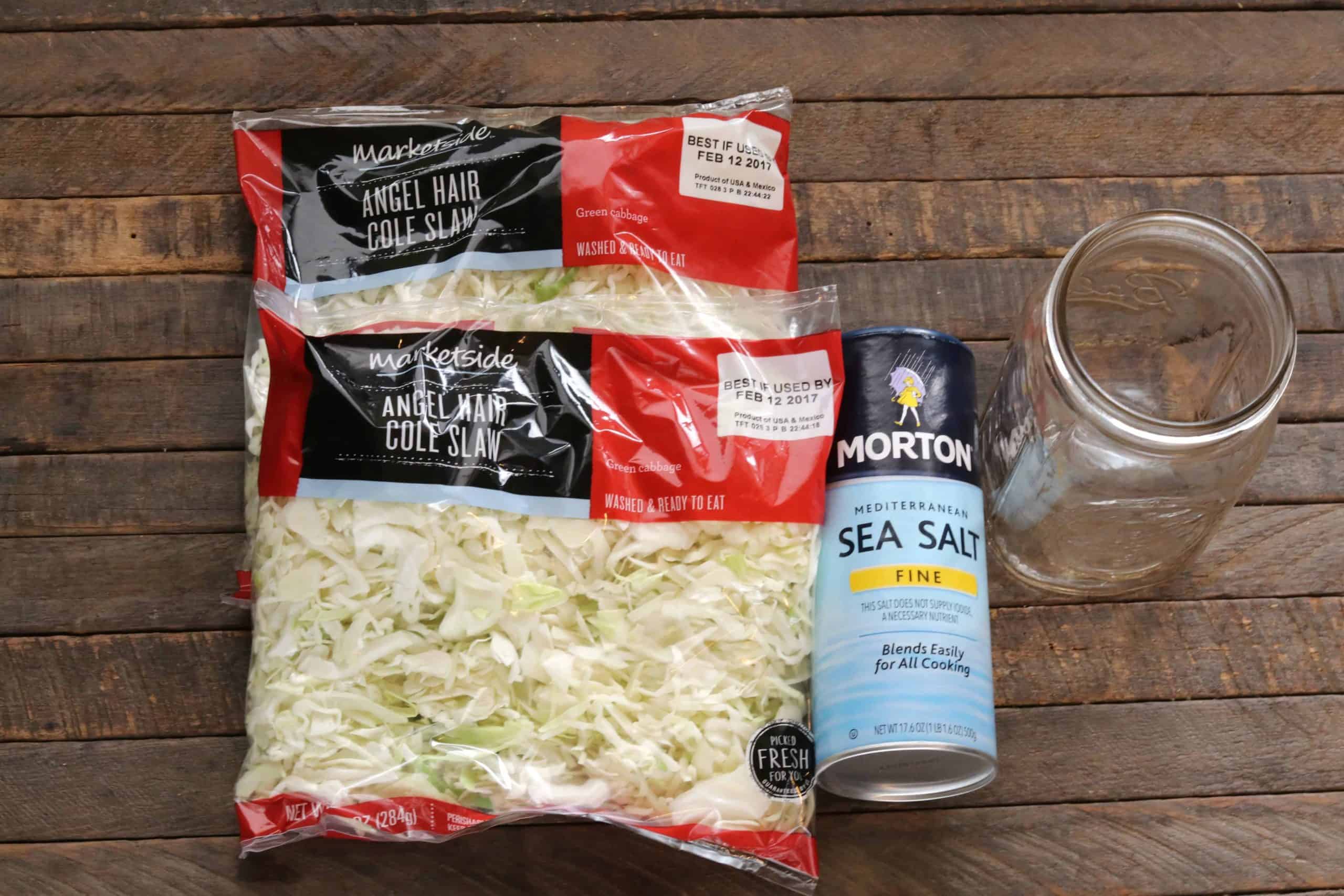
Ingredients
- 1.5-2 pounds shredded cabbage
- 1 tablespoon kosher salt
Instructions
- Place shredded cabbage in a large bowl. Sprinkle salt over. With very clean hands (or using gloves) squeeze and mix cabbage and salt for several minutes, until it decreases in volume and starts producing juices.1.5-2 pounds shredded cabbage, 1 tablespoon kosher salt
- Cover and let it sit for 10 minutes.
- Pack the cabbage into a mason jar, pressing down as much as possible. Cover and let it sit for a day.
- Check to see if there is enough liquid to cover the cabbage. If so, open the lid and press down until the cabbage is submerged. If not, add a little more water so that there is enough to cover. Press cabbage down to submerge. Cover with lid once more.
- For the next week, open the lid in the morning and evening to release pressure and then immediately close it again. After the first week, once per day should be enough.
- You can begin testing the flavor of the sauerkraut after one week. Once it reaches your desired depth of flavor it is ready to place in the refrigerator and start eating. Store in the refrigerator for several months. I prefer to leave mine out for two weeks before refrigerating.
Nutrition

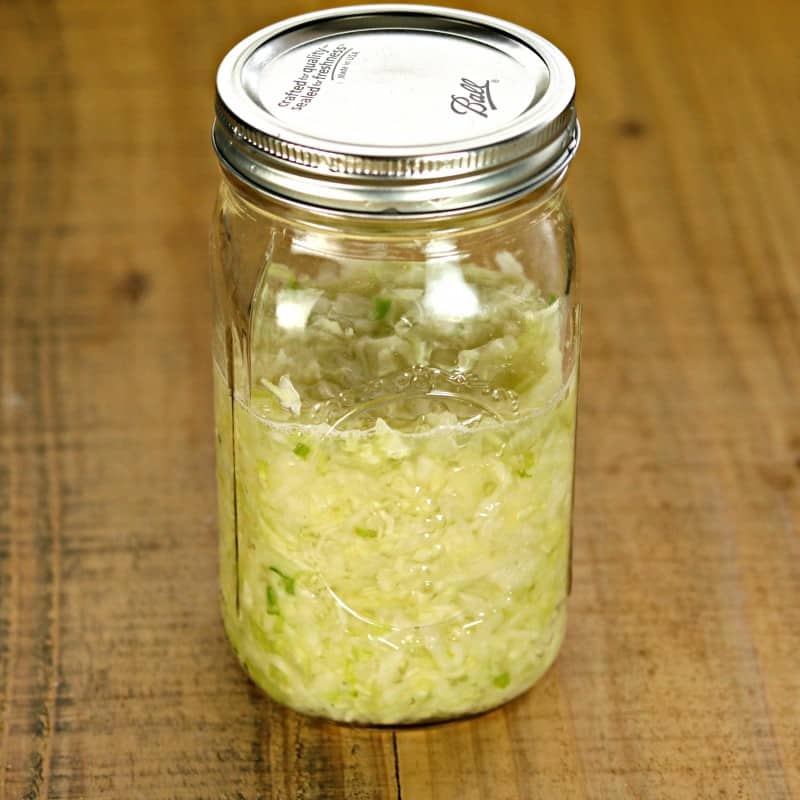
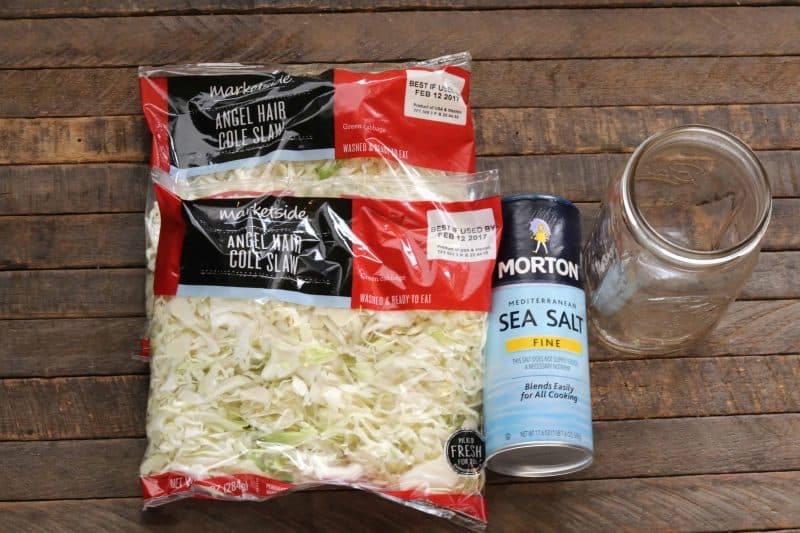
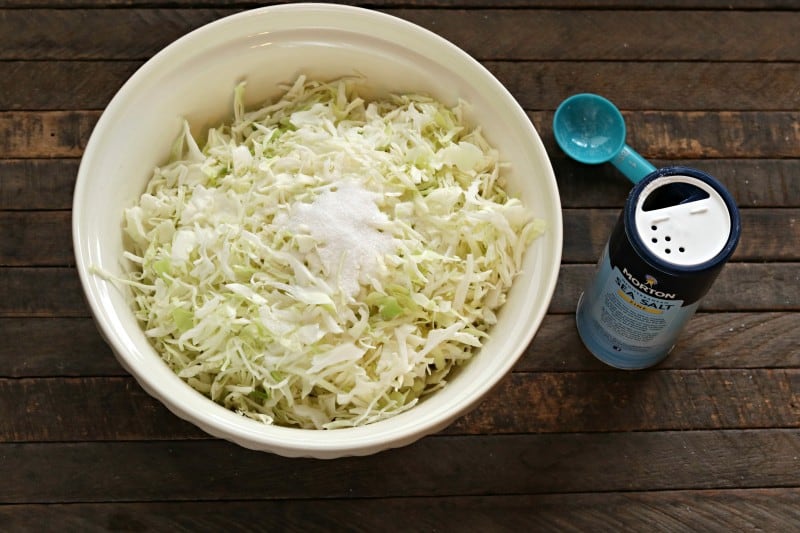
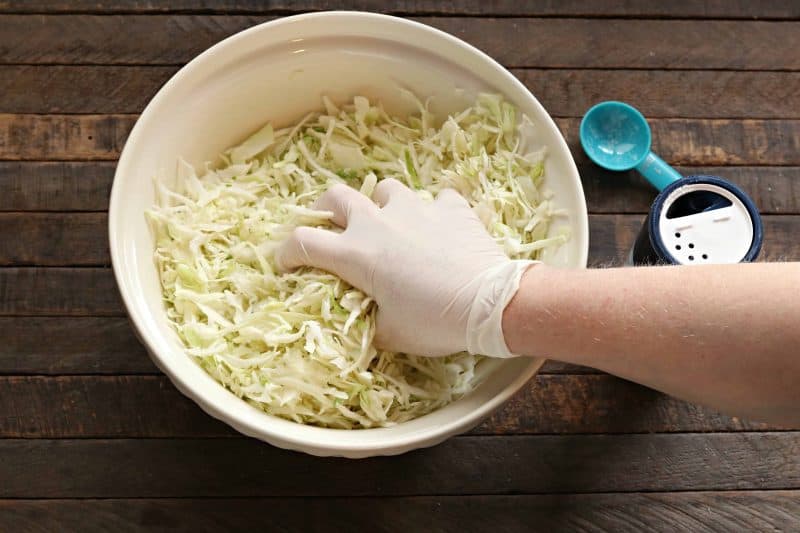
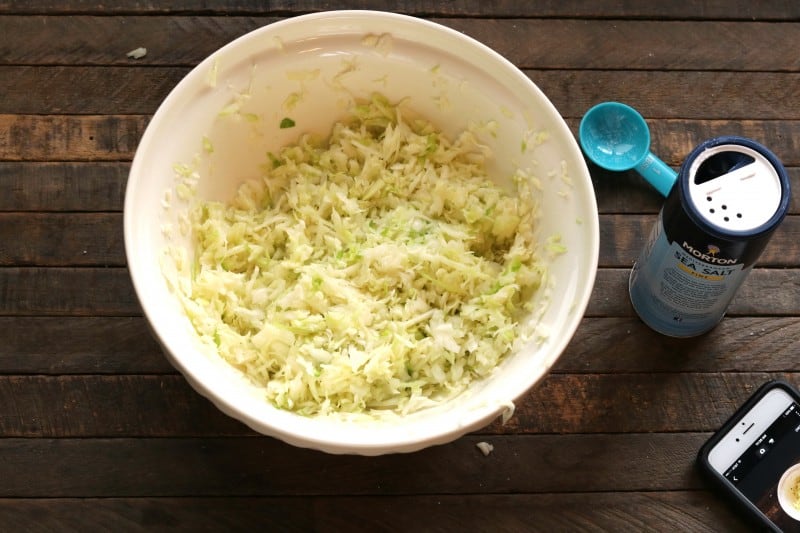
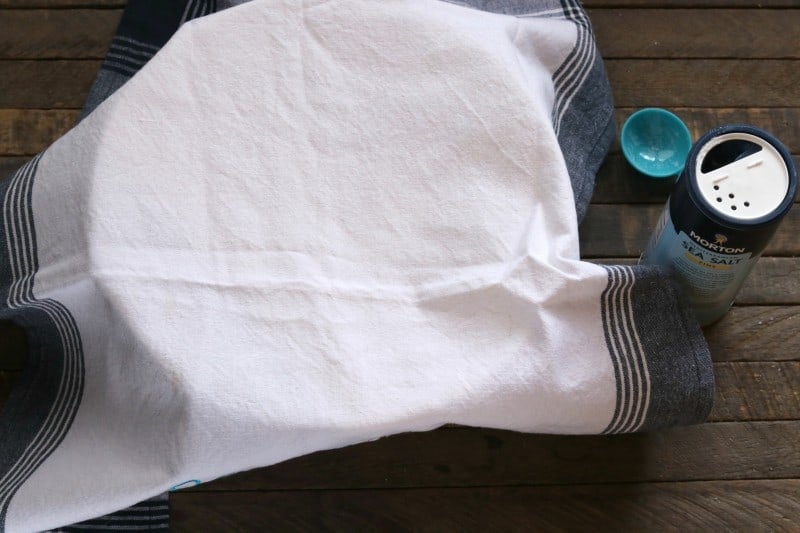
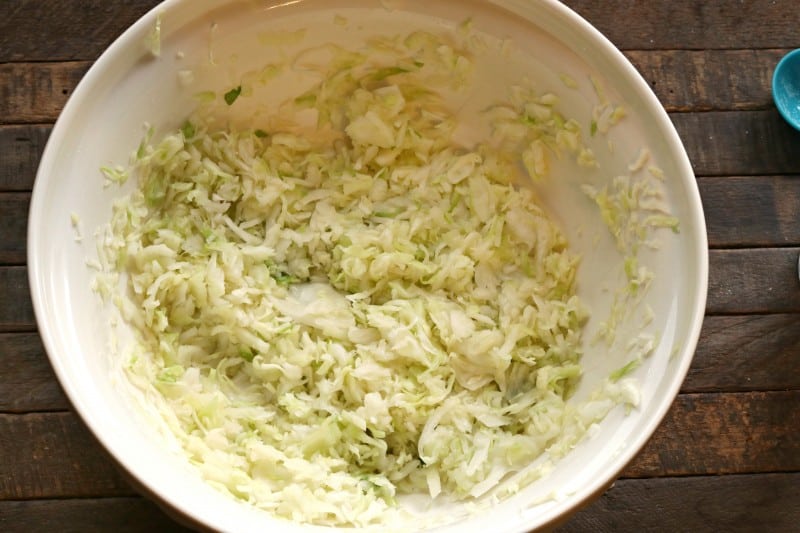

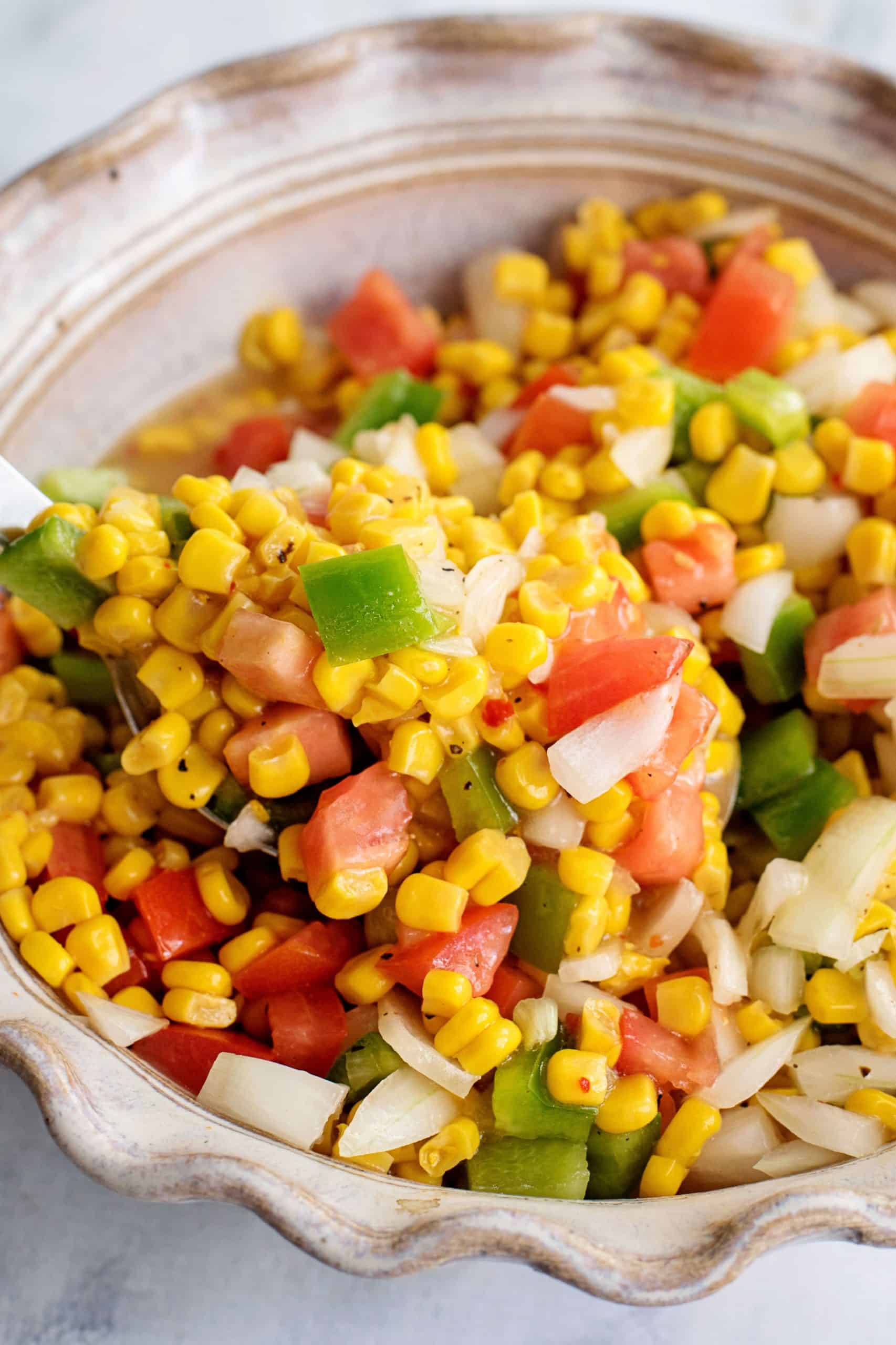


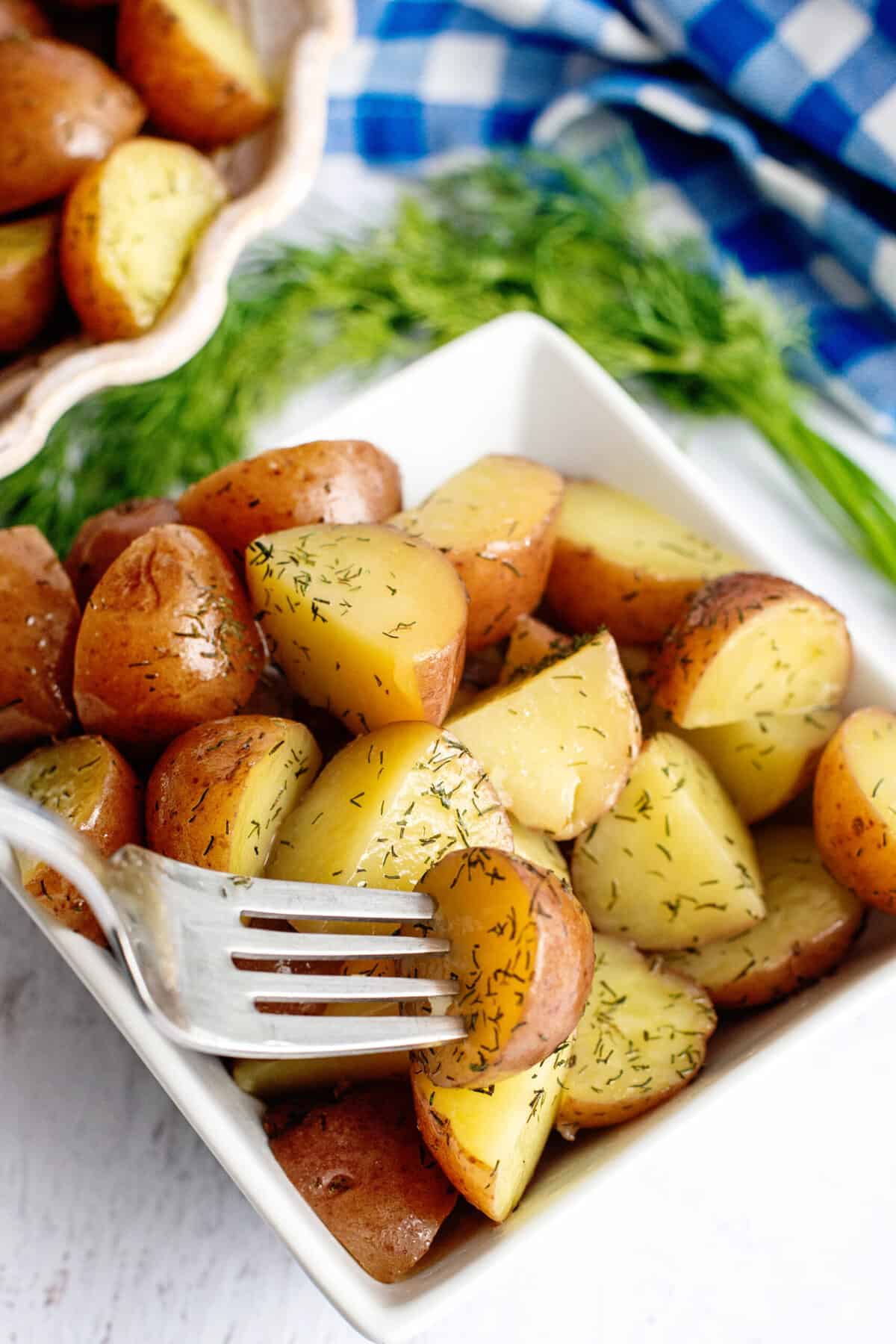


Oh I adore it when I find another kraut lover!!! I grew up eating my Mammy’s kraut. Mom would always have it available whenever she made soup beans and corn bread. (Pinto beans every where else). I got sick of never having it so I started making my own about 5 years ago. I have the e-jen container and it does great! Do you like pickled corn? That’s another one of my favorites!! A few years ago my aunt showed me how to make it.
I learned how to make some great corn relish from the very website! Thanks, Christy! My husband loves it. Or is picked corn something else?
My aunt makes it the same way as sauerkraut. Cut the corn on the Cobb, add salt to it and let it ferment away! We always called it pickled corn. I was born and raised in Eastern KY, so it may be called something different elsewhere . It’s one of my favorite things to eat!!
I usually make a big batch of corn relish each year – and then proceed to eat every last bite of it all by myself. Often I will just pop open a jar and eat it for breakfast! lol
I’m gonna have to try your corn relish, it sounds delicious!!
Could you make this in an old churn like my Mama used to churn milk in to make buttermilk? I would also like to tell you what a blessing your scripture writing plan is. I t has helped me get back to more bible reading, Thanks and God bless
You sure can! Just clean it really well and use a plate to weight it down. The main thing is to make sure you don’t use a container that’s ever been used to water glass eggs but I would imagine those are rare things these days. Thank you so much for being here and for your encouragement!
“water glass eggs”? I’m lost.
Waterglassing is an old way folks used to preserve eggs. They would mix up a sodium silicate water mixture and put the eggs in a crock, then cover them with it. This sealed the pores of the eggs and helped them to keep longer at room temp. It was especially helpful with heritage breeds of chickens who didn’t lay year round and when refrigeration wasn’t available. It ruins a crock for other things, though. If you see a white film inside your crock when it is dry, it was most likely used for water glassing. The film will disappear when wet but appear again once it dries. This will ruin anything you try to ferment, unfortunately.
Love this! Thank you. Question can our add other spices to the mix?
Yup! Customize away!
I love it makes my mouth watery but have to keep away due to high blood pressure and 5 by-pass surgery but sounds very tempting.
I’m so sorry but I hope you find another recipe from the old days to treat yourself with!
Looks good. I too like the Aldi Kraut but the purple German one in a Jar slow cooked over a pork roast. When I was young my mom made Green Tomato Kraut which was green tomatoes, cabbage, and hot peppers to taste. She made it in a crock. it sure was good having a big spoon full with a bowl of pinto beans.
Green tomato relish like your Mom’s is relish. My Gram made it when I was little. My hubby & I like it with collards, turnip greens, black eyed peas, crowder and purple hull peas. It is available in small country stores in our area. BTW, have you ever tried whole okra on top of your peas or butter beans while they are cooking. It gives the peas or beans a rich taste. You can eat the okra as a side dish with your meal. By taking the okra off others in your household will still eat the peas ( this is for those than won’t eat boiled okra).
Linda, The one my mom made was not sweet but like kraut. So I do not know if we are talking about the same thing. I have ate pickled okra but don’t like the slime of unfried okra.
We plan to make kraut with our fresh cabbage we grow in our garden this year! I cannot wait!!
Jena Woodson
I cant wait to hear how it turns out Jena!!!
That sounds delicious! Both of y’all are making my stomach growl 🙂
My grandmother made it in a big white milk churn. The whole back room off the kitchen would be full of smelly fermenting cabbage. But oh it was so good once she decided it was ready. She canned everything! Unfortunately my city cousin thought the empty churn was a toilet and that big churn wound up in the garbage pile while my grandfather was dispatched to town for another one.
Well now there is a memory for sure! lol!!
Thank you thank you! This post comes at s great time for me as I just discovered by accident that sauerkraut helps me with some digestive issues. I’ve been trying out different ones from the store, but now I actually feel like I can make it! I happen to love it. Can’t wait to try this kind!
And what you make at home is going to be so much better for you because all that good stuff is far more potent and actually living. I’m excited for you to try it!
I have stomach issues also and am trying to not take omeprazole. Does sauerkraut have the same effect that dill pickle juice does?
I’m really not sure. I’ve heard of people drinking pickle juice for electrolytes but not for stomach issues. If it is somehow providing a probiotic then this would offer a better version of that but I’m not sure there is a lot of probiotics left by the time cucumbers are pickled.
I am by no means a doctor or nurse, however if I have an upset stomach, sauerkraut always makes mine feel better.
I read that homemade is much better for you because it doesn’t have any additives like bought is likely to have.